Cutting a 20 Carat Rough Diamond
The stages of cutting a 20 carat rough diamond.
The stages of cutting a 20 carat rough diamond.
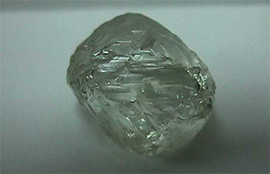
The rough diamond weighs 20.09ct. and was purchased in West Africa. The shape is octahedral with rounded points and ribs. A large feather inclusion is situated on one of the faces that extend from the surface to approximately one third into the diamond. The rough diamond will be oriented so that a large clean piece can be obtained and the smaller piece positioned to minimize the large feather inclusion.

The rough diamond is shown mounted in a sawing pot with the smaller included piece exposed. Notice the black ink line that will direct the sawyer during the sawing operation. This type of off-centered sawing is called topping.
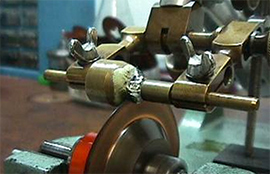
The diamond is mounted in a sawing machine and lowered into a revolving blade that spins at approximately 8,500 RPM. The edge of the blade is coated with diamond powder and periodically charged during the sawing process. It took approximately 21 hours to saw through the entire 20.09ct. rough.
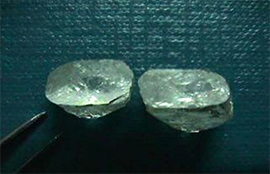
We can clearly observe that the rough was separated into two pieces. The smaller piece weighs 7.56ct. and the larger piece 12.23ct. This gives us a weight loss of 0.30ct. Which represents 1.5% loss during the sawing process. (By comparison, standard weight loss during sawing averages 2%)
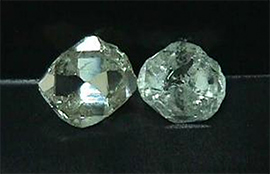
The saw plane on each piece of rough will automatically become the table facet for two round brilliant cuts. We can now observe the larger piece on the left fully roughed out and the smaller piece partially roughed out. Roughing out is the process in which preliminary facets are placed on the rough to check the best position for final placement and orientation of the finished diamond.

The 12.23ct. larger piece is bruted to a circular outline suited for a round brilliant. As simple as this process seems a great deal of skill is required to shape the rough to a round outline. If the bruter removes too much material a great deal of unnecessary weight can be lost.
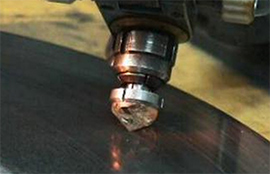
The bruted diamond is held in a pot around the girdle area and facets are placed by grinding them on a cast iron wheel, which is charged with diamond powder. After each of the main facets are ground to the correct depth and angle, they are then polished to a mirror finish.
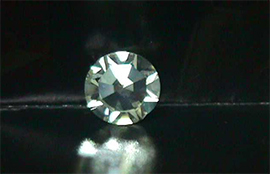
Shown, is an aerial view of the fully blocked 12.23ct. rough diamond. A blocked diamond is one in which all eight crown mains (facets) including the table is fully cut and polished. The pavilion has eight corresponding mains (facets) and one culet. The diamond is now ready for the remaining facets, which is called the brillianteering process. There are a total of 58 facets to a full cut round brilliant.
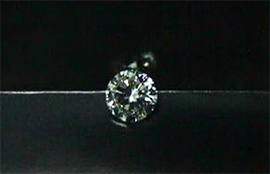
The completed diamond is now seen in all its beauty. When properly cut and polished, it returns light in a dazzling array of brilliance. The final weight of the finished diamond is 6.12ct. which represents 50% of the original weight of the rough. (12.23cts.)
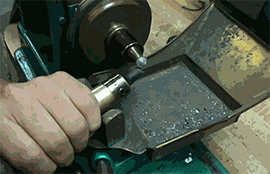
The smaller (7.56ct.) piece of rough is being bruted to obtain a circular outline. Notice an industrial diamond embedded at the end of a rod is applied to the rough as it rotates. Great care is taken so that the large inclusions in this piece does not expand or travel deeper into the rough.
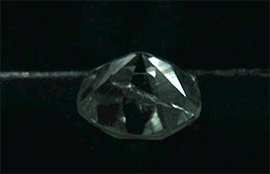
We can observe a side view of the fully blocked 7.56ct. rough. Notice the depth and length of what remains of the large feather inclusion. To remove anymore of the inclusion will cause too great of a weight loss.
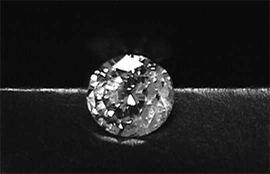
The completed 7.56ct. rough now weighs 3.70ct. The diamond is very brilliant from the face up position, however we can still observe on the right side, a white appearance where the feather inclusions is situated.